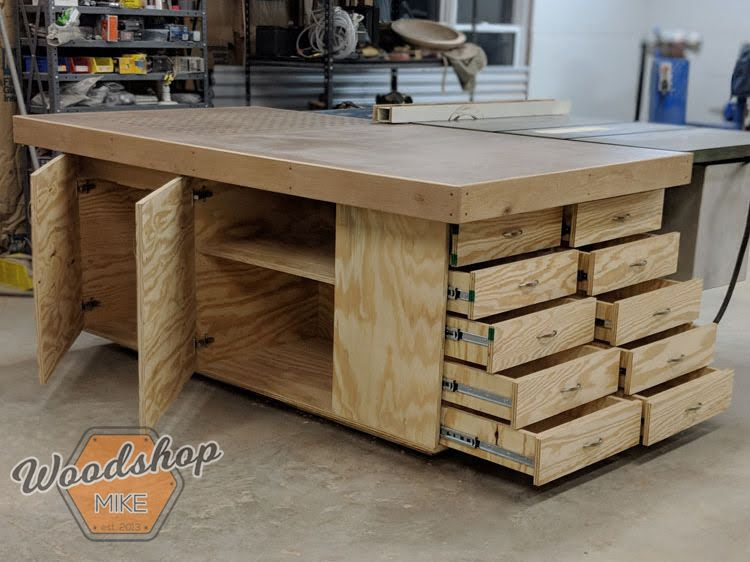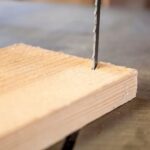Introduction
When assessing your furniture for uneven legs, the key is to look for surfaces that aren’t level. Start by standing up your piece and gauging the angles at which each leg stands compared to one another. A good way to think about it is if you were drawing a straight line across all legs, they would need to be even in order to meet that standard.
You can also use a carpenter’s level or an adjustable bubble level tool if you want a more precise assessment of how level the area is before commencing with any woodworking repairs. A carpenter’s square is also helpful in ensuring that your corners are right-angled. Once you have identified which legs are uneven and why, you can start on the next steps for fixing them.
Next, determine the kind of repair you need to do for each leg. If the legs have been warped due to too much weight or water damage, then you may need additional support such as braces and/or additional wood pieces. On the other hand, if the unevenness is caused by loose joints, then tightening them should do the trick. You may also need to trim wood from certain spots using a planer or other power tools in order to achieve perfect symmetry among your furniture’s legs. Finally, make sure that all hardware pieces including screws and nails are securely fastened in place so as not to affect balance anymore during regular use of your furniture piece!
Reasons for Uneven Legs and How to Recognize the Signs
Reasons for uneven legs may include wear and tear over time, an uneven floor surface or furniture that was assembled poorly. To recognize these signs, look at the furniture from different angles and if the legs are not parallel with one another it may indicate that there is a problem. Stand back and check to see if any of the legs appear to be higher than the others; this could suggest that one of the legs has been worn down more than the others. If you think the unevenness has been caused by the floor surface then check by tapping around each leg in case there is something underneath which is causing it to sit slightly lower than the other legs.
Common Causes of Uneven Legs and How to Fix Them
Uneven legs in a piece of furniture can be caused by several different issues. One common issue is that the legs were cut unevenly to begin with, or one of them has been damaged and no longer has a straight edge. To fix this, you need to measure the length of each leg and then sand the shorter leg down until the two sides are even. If the problem is more significant, you may have to even out one side first with some fine-grit sandpaper before working with a course grit paper to match it to the other leg.
Another problem that can cause uneven legs is an unstable base or footing. This can be caused by weak joints, warped wood, poor installation or even slowly settling ground beneath the piece of furniture. To fix this you must first identify what exactly is causing the instability and then repair it accordingly. This could include reinforcing joints, supporting weakened boards and leveling any sloping areas in order to evenly distribute weight distribution on all four legs. Finally, if all else fails – furniture stands and adjustable feet can help provide stability for most pieces of furniture and correct for unevenness when needed.
Tools Needed for Woodworking Fixes Uneven Legs and Where to Find Them
In order to fix uneven legs on furniture, you will need a few key tools. These can usually be found in most hardware stores, online, or from a woodworking store.
The first tool is an adjustable wrench. This will provide the leverage required for adjusting bolts and screws that may be used to modify the length of the furniture’s legs. It is important to select an adjustable wrench with good grip and reach as it needs to fit easily around any screws or bolts located on each leg of the piece of furniture.
The second tool needed is clamps. Clamps are essential for holding the legs in place while adjustments are made and also aid in keeping any glue-lined joints firmly together if needed. Typically, clamps should have sturdy grips, rubber tips at the bottom to avoid scratching the surface of the wood, and should extend far enough to wrap completely around each leg securely and firmly fit two pieces of wood together.
The third tool needed is a handsaw or coping saw to help trim and adjust any excessive timber length that may be causing uneven furniture legs. Handsaws usually come with sets including jimmies, metal hacksaws, flat files or knives which can all prove useful when working with hardwood materials.
Finally sandpaper or a power sander may be required for smoothing down any excess material left after cutting and gluing together joints before polishing the finished product. Always remember to wear protective gear such as masks, goggles and gloves when dealing with high powered tools such as sanders as they create dust particles which can be hazardous upon inhalation if precautions are not taken appropriately.
Step-by-Step Instructions for Fixing Uneven Legs
1. Begin by placing the woodworking project on a flat surface or table. You may want to use shims underneath the legs to ensure that all of your measurements are accurate.
2. Measure the height of each leg with a ruler or measuring tape. If one of the legs stands higher than the other three, you can use a combination square as a reference in order to determine how much needs to be trimmed off of that leg.
3. Use an abrasive tool such as a belt sander, sandpaper block, or file in order to gently remove small amounts of material from the raised leg until it meets its intended level with the rest of the legs.
4. If necessary, you can also use pieces of thin wood shims under one or more legs if they need additional support in order to reach a level position with each other.
5. When complete, check all four corners again and adjust any remaining height differences accordingly until everything is even and flush with each other at all surfaces make contact with the floor or table where it sits upon completion.
Tips for Improving Durability and Leveling Uneven Legs
When it comes to woodworking and fixing uneven legs, there are a few tricks and tips that can help improve the durability and leveling of the legs. The first is to use a plane or power planer to level out the legs evenly. This will ensure that each of the four legs are all at an even level. Make sure that you move slowly, otherwise you might end up taking off too much material.
Another tip is to soak each leg in hot water. This will help soften the wood of the leg so it becomes more malleable and easier to shape into an even level. Let each leg soak for about 10 minutes before continuing work on them.
Finally, you will want to thoroughly sand down any spots on the surface that may be uneven after performing either of these steps. You should sand with a fine-grit paper for a smoother surface finish, then look for any holes or gaps in between when the legs are together and fill with wood filler if needed. By following these tips you’ll have sturdy and level legs ready for any type of project!
Conclusion
Ensuring your furniture is level and stable can have many benefits. Having level and stable furniture can affect how reliable the piece of furniture looks, how much wear and tear the surface receives over time, and how it functions. Uneven or unstable legs can cause furniture to become wobbly, tilt, or sag, which can damage floors and cause scratches or chips in other surfaces. By ensuring all legs are even and sturdy when building or repairing furniture, you can provide a safer, more comfortable environment for your home or office. Furthermore, well-supported legs also reduce stress on wood joints for better long-term use of the piece. Stabilizing items with uneven pieces will ensure improved safety and performance for years to come!

Hi everyone! I’m a woodworker and blogger, and this is my woodworking blog. In my blog, I share tips and tricks for woodworkers of all skill levels, as well as project ideas that you can try yourself.





